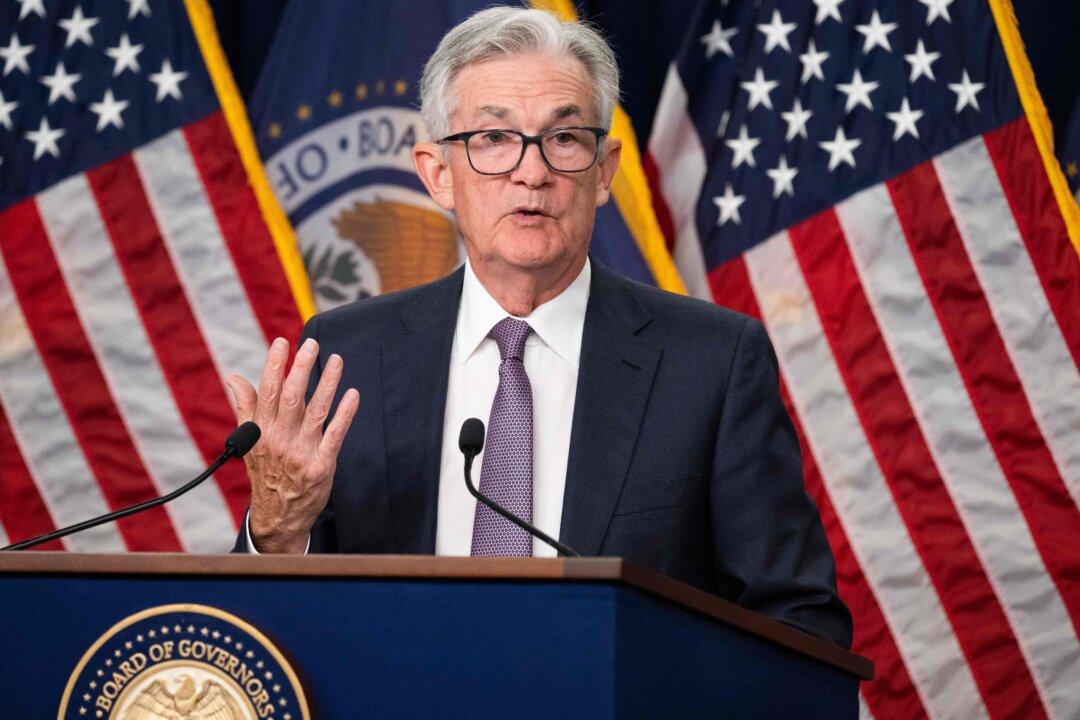The U.S. dollar is at 20-year highs—rising by almost 5 percent in September alone and over 19 percent year-to-date. This latest bout of greenback strength is creating chaos for other currencies, including the typically stable Canadian dollar, and primarily reflects financial markets adjusting for the greater likelihood of a recession, according to a foreign exchange strategist.
Greg Anderson, BMO’s global head of foreign exchange strategy, told The Epoch Times that what’s more pertinent to the U.S. dollar’s move higher is that “the risk of a recession has gone from 50 percent to 80 percent” and that the U.S. Federal Reserve is not going to bail out the global economy this time.
“He [Fed chair Jerome Powell] left the market with the impression like … ‘Hope there’s not a recession, but if there is, so what? We don’t care. We wouldn’t cut [interest rates],’” he said.
The Fed is not currently forecasting or expecting a recession, much like the Bank of Canada.
“We’re pricing recession risk. And the way you price recession risk is you sell stocks, you sell commodities. And then you sell currencies and buy the USD. So I think that is the primary factor,” Anderson said.
As an example of how much more hawkish the Fed has become to bring down inflation, the median projection for its federal funds rate at year end is now up to 4.4 percent. It was 3.4 percent in June.
As the Fed raises interest rates, the U.S. dollar is pushed higher as money gravitates to where it can earn the highest returns with the least amount of risk.
It’s been a dire year for nearly every asset class, from stocks to bonds to commodities.
Gold has lost its shine even in the presence of market turmoil and elevated inflation—it is at its lowest since April 2020.
U.S. stocks hit their lowest level of the year on Sept. 27.
“The U.S. dollar has really been steamrolling everything all year,” SIA Wealth Management chief market strategist Colin Cieszynski said in an interview with BNN Bloomberg on Sept. 27.
Loonie’s Prospects
The Canadian dollar, while holding up better than some more widely traded currencies like the pound and the yen in 2022, has been hit just as hard as those currencies in this most recent sell-off.
The Canadian dollar fell below US$0.73 on Sept. 26 for the first time since May 2020 shortly after the first pandemic lockdown when financial markets were still under siege.
“The latest nosedive in the CAD comes ahead of what we anticipate will be a rough ride for the Canadian macro outlook in Q4 as high debt-servicing burden should prevent the consumer from supporting the economy to the same degree it has in the past,” said TD senior foreign exchange strategist Mazen Issa in a Sept. 27 note.
After the Fed meeting on Sept. 21, TD said the currency it is most concerned about is the Canadian dollar.
“There is nothing to like about the CAD at this time, and the debt party that the economy has relied upon to support previous economic recoveries is over.”
TD added that the loonie will have to move lower as the housing market cools off even further as rates rise, given the highly indebted nature of households.
But Anderson expects the loonie to outperform most other major currencies if the market malaise were to continue.





